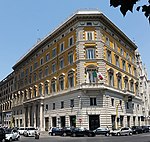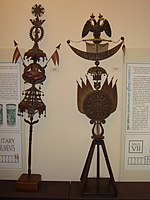Preziosissimo Sangue di Nostro Signore Gesù Cristo
20th-century Roman Catholic church buildings in ItalyHoly Blood churchesRoman Catholic churches completed in 1957Rome Q. XVIII Tor di QuintoTitular churches

The church of the Most Precious Blood of Our Lord Jesus Christ is a place of Catholic worship in Rome, seat of the parish, in the Tor di Quinto neighborhood, in Via Flaminia.
Excerpt from the Wikipedia article Preziosissimo Sangue di Nostro Signore Gesù Cristo (License: CC BY-SA 3.0, Authors, Images).Preziosissimo Sangue di Nostro Signore Gesù Cristo
Via Città della Pieve, Rome Tor di Quinto
Geographical coordinates (GPS) Address External links Nearby Places Show on map
Geographical coordinates (GPS)
| Latitude | Longitude |
|---|---|
| N 41.946102081898 ° | E 12.474127874315 ° |
Address
Chiesa del Preziosissimo Sangue di Nostro Signore Gesù Cristo
Via Città della Pieve
00191 Rome, Tor di Quinto
Lazio, Italy
Open on Google Maps







